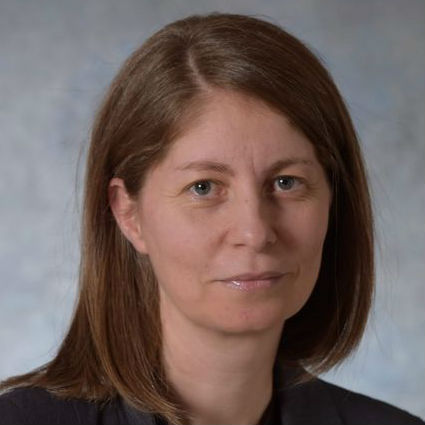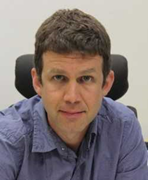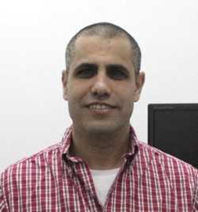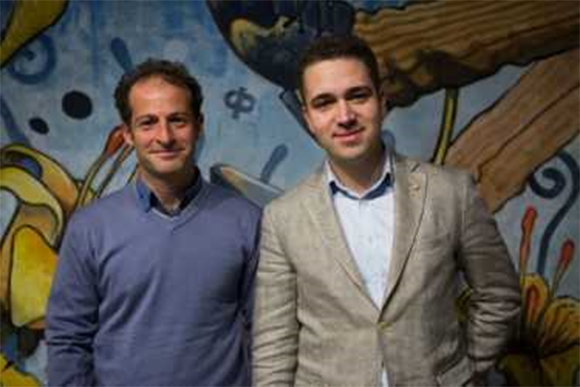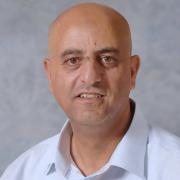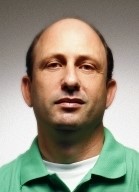Winning Projects
|
Prof. Yael Hanein, School of Electrical Engineering, Faculty of Engineering
Dr. Tom Schonberg, Faculty of Life Sciences |
Individualized closed-loop sensorized virtual reality for behavioral change
In this research, we will develop a closed-loop virtual reality (VR) experience to optimize behavioral change. We will use readings from multiple sensors and machine learning algorithms to individually optimize the immersive controlled VR experience.
Our main goal is to identify the personal signals pattern in different internal states and use them to titrate the training session. For this purpose, we will use advanced VR goggles that are adapted with a unique binocular high-speed eye-tracking device that allows both calculating pupil diameter as well as gazing while participants are watching content. We will combine this signal with recordings of an innovative wireless skin-adhesive electrode array of surface electromyography (sEMG). Finally, we will develop advanced machine learning algorithms that will be applied on the rich data from all sensors (electrodes and eye-tracking) to decode ones current internal state and then inform the real-time the task presented to participants to enhance learning and behavior. |
|
Prof. Tal Dvir, School of Molecular Cell Biology and Biotechnology, Faculty of Life Sciences; Department of Materials Science and Engineering, Faculty of Engineering, The Center for Nanoscience and Nanotechnology |
3D printing of cardiac patches with integrated sensors and actuators to regenerate the infarcted heart
Cardiovascular diseases account for 34% of all annual deaths in the United States with costs in excess of $500 billion. Myocardial infarction (MI; heart attack) captures a significant segment of this population and is associated with sudden death, as well significant morbidity and mortality. MI results from the blockage of one of the coronary arteries which supply the cardiac tissue leading to ischemia (i.e. oxygen deprivation) of a segment of the heart. This process eventually leads to the death of contractile cells and the formation of a scar tissue. Since cardiomyocytes (cardiac muscle cells) cannot proliferate and the number of stem cells in the heart is limited, the heart is unable to regenerate, leading to chronic cardiac dysfunction. Complications following an initial MI include heart failure, recurrent ischemia, arrhythmias and together manifest with a 5-year mortality near 50%. Currently the only cure for end-stage heart failure is cardiac transplantation. As cardiac donors are scarce, there is an urgent need to develop new strategies that will promote heart regeneration and thereby limit morbidity and mortality from this disease.
Cell therapy and tissue engineering are envisioned as true regenerative therapeutic alternatives. This multidisciplinary proposal combines approaches from life and materials sciences, electrical engineering, and chemistry to prove the principle of sensors-actuators-instrumented printed myocardial patch technology. The proposed research relies on two major breakthroughs developed in our lab in the last couple of years: The engineering of a microelectronic cardiac patch, and 3D printing of vascularized cardiac patches. In this study we will print sensors and actuators in parallel to printing a cardiac tissue. The printed electronics will be used for on-line sensing of the electrical activity within the patch and for on-demand electrical stimulation. The vascularized, instrumented, cardiac patch will be implanted in infarcted hearts of animals to confirm its ability to integrate and function in the working heart in vivo, and its therapeutic effect will be evaluated. It would be the first fully printed instrumented cardiac patch, capable of improving myocardial function, as well as monitoring and regulating its own electrical activity. |
|
Prof. Jason Friedman, Physical Therapy, Sackler Faculty of Medicine Dr. Konstantin Sonkin who is leading the project |
Development of a multimodal Brain-Computer Interface based on artificial intelligence for rehabilitation of people with motor disorders
There are millions of people with movement disabilities but modern medical and technical solutions have very limited capability to restore lost motor skills. The objective of this project is to improve quality of life of people with movement disorders by a novel interdisciplinary solution for neuro-rehabilitation. The solution is a multimodal brain-computer interface (BCI), which performs decoding of brain and body signals, measured by EEG and accelerometers and gyroscopes, by means of advanced methods of artificial intelligence and machine learning.
The proposed AI-based classification system of motor commands will perform a cycle of multimodal multichannel data acquisition, feature extraction, classification and neurofeedback training. In order to increase applicative potential, feasibility to transfer the developed classification model to consumer-grade EEG equipment will be studied. Thus, the project aims to develop a safe, affordable and portable multimodal BCI, which has the potential to become the key technology for neuro-rehabilitation of patients with severe movement disorders. |
|
Prof. Rami Haj-Ali, School of Mechanical Engineering, Faculty of Engineering |
Innovative Artificial Intelligence Algorithms for Heart Medical Procedures: Optimal Intervention Time for Transcatheter Aortic Valve Replacement Calcific aortic valve disease (CAVD) is a narrowing of the aortic valve (AV) opening which is characterized by formation of hard tissue similar to bone on the leaflets of the AV. The Reverse Calcification Technique (RCT), was developed at TAU, is based on using CT scans from pre-TAVR CAVD patients, in order to study the calcification progression that leads to the current state.
In this Zimin supported project we will develop artificial intelligence algorithms that can predict the calcified aortic valve (AV) properties from patient CTs. The proposed methodology will ultimately allow us to predict the optimal time for AV replacement and treatment of heart patients with stenotic AVs. |
|
Prof. Noam Shomron, Sackler Faculty of Medicine |
Identification of intraperitoneal free cancer cell during surgical procedure for disease management: a multidisciplinary engineering solution using a deep learning and real-time-repaid sequencing technology Intra-abdominal malignancies carry the risk of spreading intraperitoneal free cancer cells (IPCC) which might lead to the spread of cancer to other organs. IPCC are considered as an important prognostic tool in several cancers such as ovarian and gastric cancers. The development of curative treatments based on intraperitoneal chemotherapy showed effective outcomes. However, the time elapsed between IPCC sampling and detection is critical, and unfortunately, now it takes weeks to reach a conclusion. The Nanopore DNA sequencing device is a handheld machine that reads long stretches of DNA in a real-time, yet its current drawbacks are its accuracy. Deep learning techniques mimic the learning process of the human brain in order to recognize patterns in digital representations. In our lab, we use deep learning to circumvent the limitations of Nanopore sequencing by learning the 'signal' rather the 'sequence' of the DNA. The aim of our project is to establish a real-time-rapid method for the identification of IPCC during colorectal resection. We propose a solution given on our close collaboration with the Surgery Division at Sourasky Medical Center, and is based on three components: (i) access to clinical samples (abdominal fluid and mouth swabs) during resection in the operation theatre; (ii) real-time-rapid DNA sequencing; and, (iii) deep learning algorithms for the discrimination between somatic versus germline DNA. We believe the time has come to merge DNA sequencing (as a digital signature) with deep learning in order to establish a real-time-rapid clinical feedback for the surgeon in the operation theatre. |

